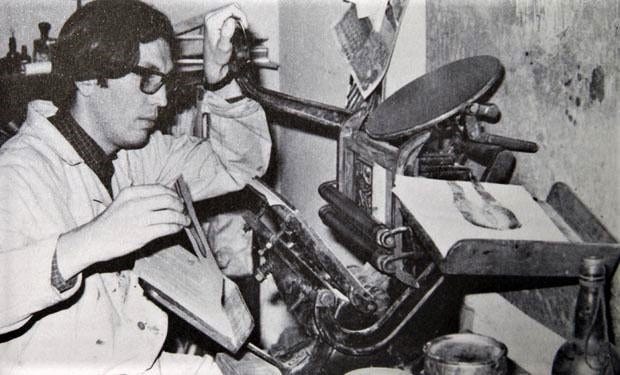Guillermo Deisler: Language in Exile, Art Without Borders
Guillermo Deisler (1940–1995) was a Chilean visual artist, poet, and publisher known for his experimental approach to art and literature, particularly in the fields of mail art, visual poetry, and artist books. His methods were deeply influenced by political exile, a commitment to underground artistic movements, and an emphasis on accessibility and collaboration.
Key Methods of Guillermo Deisler:
1. Mail Art & Global Collaboration – Deisler was a key figure in the international mail art movement, a decentralized form of artistic exchange that circumvented censorship and traditional art institutions. He used postal networks to distribute his work and engage with other artists worldwide, fostering a sense of artistic resistance during his exile from Chile.
2. Visual Poetry & Typography – He blended poetry with experimental typography and collage, often deconstructing language into fragmented, visual compositions. His approach was influenced by concrete poetry and sought to create meaning through the form as much as the content.
3. DIY Publishing & Artist Books – Deisler was the creator of UNI/vers(;), a handmade artist magazine that featured visual poetry and graphic experimentation. Using small-scale, independent publishing techniques, he produced limited-edition works that challenged traditional publishing hierarchies.
4. Political Resistance Through Art – His work often carried themes of exile, censorship, and political repression. By manipulating language and imagery, he created subversive messages that resonated with those living under oppressive regimes.
5. Collage & Mixed Media – Deisler frequently combined found materials, photocopies, stamps, and hand-drawn elements in his collages. This technique gave his work a raw, immediate quality, emphasizing the handmade and ephemeral nature of his art.
Deisler’s work wasn’t just about aesthetics—it was an act of defiance, a way to reclaim language and imagery from oppressive forces. Through his inventive use of print, collage, and mail art, he built a global network of resistance, proving that poetry and visual art could transcend borders, censorship, and exile. His legacy continues to inspire artists and writers who seek to challenge authority, disrupt convention, and find new ways to communicate in a world that often tries to silence them.



